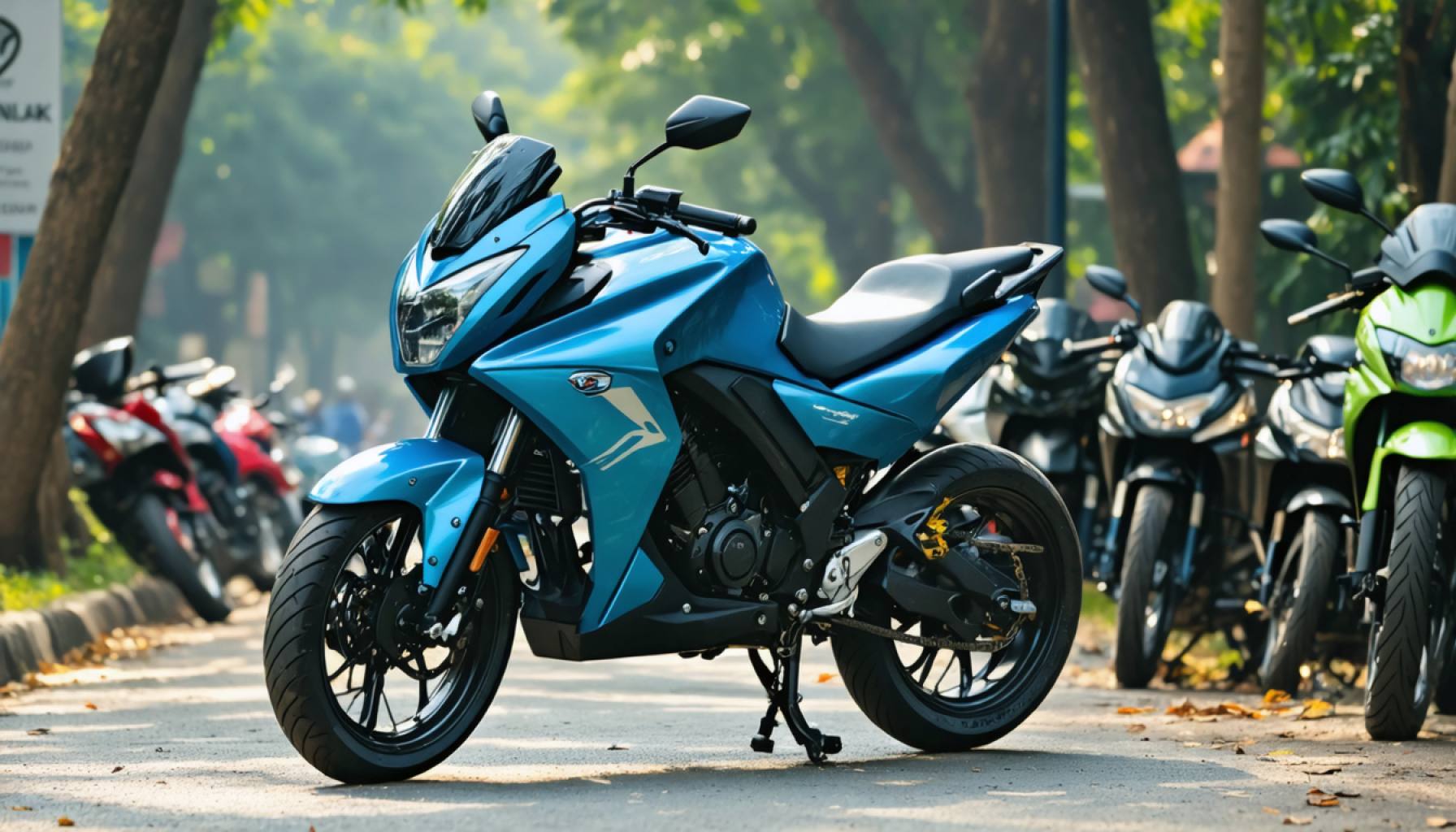- Jitendra EV is investing INR 1.25 billion (USD 14 million) over five years to revolutionize India’s electric two-wheeler industry.
- The company aims to double sales in the coming fiscal year and expand its manufacturing capacity significantly by 2028.
- New models, including the futuristic Klasoo and a hybrid Triquad vehicle using hydrogen fuel, are planned to cater to diverse consumer needs.
- A new seven-acre site in Nashik will support increased production, targeting 10,000-15,000 units per month by 2028.
- India’s electric two-wheeler market sees rapid growth, with a notable 33% increase in sales in 2024.
- Facing competition, Jitendra EV aims to measure up to market leaders like Bajaj, which holds a 29% market share.
- Jitendra EV is committed to innovation and sustainability, contributing to a greener future for Indian transportation.
Casting a hopeful gaze toward an increasingly electrified future, Indian electric vehicle artisan Jitendra EV is embarking on a thrilling journey to revolutionize the two-wheeler landscape. As whispers of a greener tomorrow echo across the bustling workshops of Nashik, the company announces a transformative investment: INR 1.25 billion (approximately USD 14 million) earmarked for research, development, and ramping up manufacturing might over the next five years.
The streets of India are already humming with the gentle whirr of electric scooters, and Jitendra EV is determined to amplify that sound, pledging to double the sales of their sleek machines in the coming fiscal year. Ambitions stretch beyond mere numbers as the company readies to unleash new models that cater to both thrill-seekers and the pragmatic e-commerce delivery ecosystem. These plans include the launch of the futuristic Klasoo and a groundbreaking hybrid Triquad vehicle, marrying electricity with the clean potential of hydrogen fuel, strategically slated for 2028.
As the wheels of innovation turn, the sprawling new seven-acre site in Nashik stands ready to nurture these electric dreams into reality. This expansion aligns with co-founder Samkit Shah’s vision of dramatically scaling production to reach an impressive 10,000-15,000 units per month by 2028, a stark leap from the 4,200 units recorded in 2024-25.
Jitendra EV’s strategic maneuvers come at a time when India’s electric two-wheeler market is reaching new heights. With an impressive 33% growth in 2024, marking a tipping point of 1.15 million electric two-wheeler sales, the nation’s appetite for clean, efficient transportation is undeniable. Scooters, renowned for their nimbleness in urban environments, lead this electrifying charge with 15% market penetration—substantially more than the 5-6% across the broader two-wheeler category.
Yet, the path is not without competition. Established titans like Bajaj, with their iconic Chetak scooping a 29% market share last quarter, represent formidable benchmarks Jitendra EV must measure up against.
In this electrifying odyssey, Jitendra EV is not merely building vehicles; they are crafting the future of mobility, one quiet revolution at a time. As they ride this wave of transformation, the message rings clear: innovation, sustainability, and resilience are the steadfast companions steering India toward a brighter, greener horizon.
How Jitendra EV is Pioneering the Future of India’s Electric Two-Wheeler Market
Innovation and Expansion in Electric Vehicles
Jitendra EV is revolutionizing the electric two-wheeler landscape with a significant investment of INR 1.25 billion (USD 14 million) over the next five years. This investment focuses on research, development, and manufacturing to cater to the growing demand for electric mobility in India. As the company plans to double its sales in the coming fiscal year, several aspects of the expansion and product offerings warrant closer examination.
Features and Specs of Upcoming Models
Klasoo Electric Scooter
– Targeted for thrill-seekers, combining performance with efficiency.
– Expected to feature smart connectivity and advanced battery technology.
– Designed with urban commuting in mind, optimizing range and speed.
Triquad Hybrid Vehicle
– Innovative hybrid model combining electric and hydrogen fuel cells.
– Scheduled for a 2028 release, positioning it as a pioneering effort in clean fuel technology.
– Aimed at logistics and e-commerce applications with an emphasis on efficiency and sustainability.
Manufacturing and Production Scaling
Jitendra EV’s expansion includes a new seven-acre facility in Nashik, enabling production to scale dramatically. The goal is to reach 10,000 to 15,000 units per month by 2028, a substantial increase from 4,200 units in 2024-25. This facility will enhance the company’s capacity to meet the increasing demand and support new model launches.
Market Trends and Competitive Landscape
India’s electric two-wheeler market saw a significant 33% growth in 2024, with 1.15 million units sold. Scooters dominate with 15% market penetration, highlighting the shift towards cleaner urban transportation. However, competition is fierce, with established players like Bajaj claiming significant market share, notably with their Chetak model.
Pressing Questions and Insights
What makes Jitendra EV stand out amidst competition?
– Focus on innovation with hybrid technology.
– Strategic investments in R&D and manufacturing.
– Comprehensive product lineup catering to both personal use and commercial applications.
What challenges does Jitendra EV face?
– Navigating the competitive landscape with established brands like Bajaj.
– Aligning production with rapidly changing technological and market demands.
– Ensuring sustainability and infrastructure support, such as charging stations.
Actionable Recommendations
– For Consumers: Look out for Jitendra EV’s upcoming models, which promise a blend of performance and sustainability, ideal for both personal commuting and businesses looking for efficient delivery solutions.
– For Investors: Consider the potential growth in the electric two-wheeler market and Jitendra EV’s proactive approach as valuable investment opportunities.
– For Policy Makers: Support infrastructure development to ensure a smoother transition to electric mobility, focusing on building more charging stations nationwide.
Critical to Jitendra EV’s strategy is aligning with India’s broader transition towards sustainable transportation. By 2028, the company aims not only to expand its product offerings but also to redefine mobility standards. For ongoing updates and developments in the electric vehicle sector, visit Jitendra EV.
